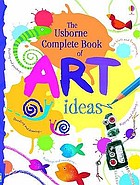- Manukau Institute of Technology
- Library
- guides
- Early Childhood Education
- Classroom Teaching Resources
Early Childhood Education
Library resources and links to classroom teaching resources
- Bachelor of Education (ECT)
- ECE Diploma Courses
- ECE Certificate Courses
- Te Ao Māori
- Pasifika
- Classroom Teaching Resources
- Study Support
Websites
-
Radio NZ Treasure Chest Stories to listen to online
-
Te Reo Games 14 different games covering topics such as bugs, clothing, shapes, fruit bingo, birds, farm animals
Practice speaking Te Reo
-
He aha tēnei? by Sharon Holt
Dewey Number: 781.6299442 HOLPublication Date: 2014
-
Te Reo with Sharon Holt Short videos on pronunciation with Sharon Holt
-
Taonga When Mahi and her cousin Hani go to Nan’s house after school, they tell her about their school project – to write about something that is a taonga to them. After talking with Nan, both children realise what they will write about. While this story has particular relevance to Māori students, many students will identify with the ideas of whānaungatanga (special family relationships) and taonga (a treasure or something that is special to a person).
-
Rongoā Māori This story has a strong theme of the value of rongoā Māori, traditional Māori medicine. It provides opportunities for students who are familiar with te reo and rongoā Māori to share their knowledge. Ana’s mum is ill, and when Nan comes to visit, she decides that rongoā Māori is what Mum needs. Nan takes Ana into the bush with her to collect the plants she wants to use. Ana is fascinated by what Nan shows her, and Nan agrees to teach Ana more about traditional Māori medicine. After using rongoā Māori to treat an unexpected emergency, they return home to prepare the leaves of koromiko they have collected to treat Mum’s
-
Uira This short, dramatic poem is in te reo Māori with an accompanying English interpretation. It describes the sights and sounds of lightning as Tāwhirimātea performs a haka. Tāwhirimātea is one of the children of Ranginui and Papatūānuku. He didn’t want his parents to separate. When his brothers separated his parents to let light into the world, Tāwhirimātea caused violent storms. He is the Atua of the winds, clouds, rain, hail, snow, and storms. “Atua” refers to ancestors who have a continued influence on people’s lives.
Reading Aloud
- Reading aloud
Te Puna Mātauranga o Aotearoa | National Library of New Zealand - Reading to Students and other approaches to teaching reading
Te Kete Ipurangi TKI - Twenty great children’s books to read to your class
CSI Literacy NZ - Top 10 read-aloud favourites for Kiwi toddlers
New Zealand Book Council
Teacher Guides and Resources
Many publishers and authors provide resources for teachers to use. Look up the author's or publisher's website.
Lesson Resources
-
Dance, Turn, Hop, Learn! by Connie Bergstein Dow
Dewey Number: 372.86 DOWPublication Date: 2006 -
Let's play number games by Suzi de Gouveia, J Andrews & J Callaghan
Dewey Number: 372.72044 GOUPublication Date: 2010 -
And the Cow Jumped over the Moon by Pam Schiller; Thomas Moore
Dewey Number: 372.87 SCHISBN: 9780876592960Publication Date: 2006 -
The Story Sack: Storytelling and story making with young children by Tanya Batt
Dewey Number: 372.677 BATPublication Date: 2006 -
Baby Steps to STEM by Jean Barbre
Dewey Number: 372.35044 BARPublication Date: 2017
On the shelves
-
Bright Ideas for Young Minds by BestStart Educare
Dewey Number: 372.37 BRIPublication Date: 2017 -
101 Essential Lists for the Early Years by Penny Tassoni
Publication Date: 2006 -
Create, Perform, Teach! by Nikky Smedley; Sam Greaves (Illustrator)
Publication Date: 2018 -
 The Usborne Complete Book of Art Ideas
by
Fiona Watt
Dewey Number: 372.52 WATPublication Date: 2010
The Usborne Complete Book of Art Ideas
by
Fiona Watt
Dewey Number: 372.52 WATPublication Date: 2010
Library and Learning Services
Te Puna Mātauranga
Private Bag 94006, Manukau, Auckland
Ph: Direct (09) 968-8777
Te Puna Mātauranga
Private Bag 94006, Manukau, Auckland
Ph: Direct (09) 968-8777
Disclaimer: Manukau Institute of Technology is a Business Division of Te Pūkenga – New Zealand Institute of Skills and Technology |
- Last Updated: Oct 6, 2025 3:37 PM
- URL: https://library.manukau.ac.nz/guides/earlychildhoodteaching
- Print Page

